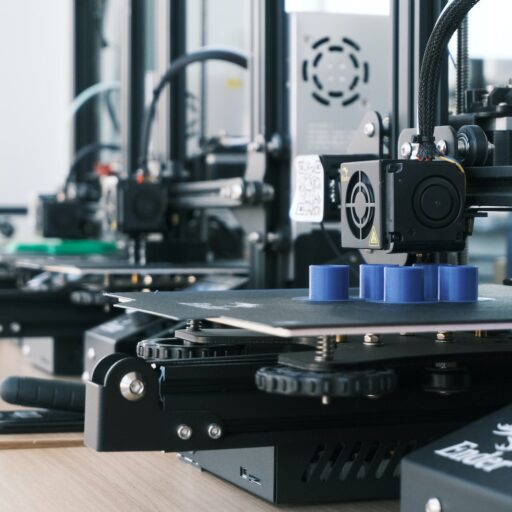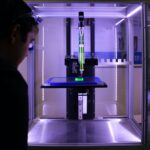Support our educational content for free when you purchase through links on our site. Learn more
Unlocking the Secrets: 15 Proven Ways to Get High Quality 3D Prints in 2024! 🚀
Have you ever pulled a freshly printed 3D model off the build plate, only to be met with disappointment as you notice layers misaligned, surfaces rougher than a gravel road, or supports that didn’t do their job? We’ve all been there! As 3D printing enthusiasts, we’ve experienced the thrill of a perfect print and the agony of a failed one. But fear not! In this comprehensive guide, we’re diving deep into the world of 3D printing to reveal 15 proven strategies that will elevate your prints from mediocre to magnificent!
Did you know that the quality of your 3D prints can depend on over 15 different factors? From the filament you choose to the settings you tweak, every little detail counts. Stick around as we explore these factors, share personal anecdotes, and provide you with actionable tips that will have you printing like a pro in no time! Whether you’re a hobbyist or a small business owner, this guide is tailored to help you achieve stunning results that will impress everyone.
Key Takeaways
- Understand Your Printer: Regular calibration and maintenance are crucial for consistent results.
- Choose Quality Filament: The right material can make a significant difference in print quality.
- Optimize Settings: Layer height, print speed, and exposure time all play vital roles in achieving the best results.
- Utilize Supports Effectively: Adequate supports can prevent warping and ensure the integrity of your prints.
- Post-Processing Matters: Techniques like sanding and painting can enhance the final appearance of your prints.
Ready to level up your 3D printing game? Shop the best 3D printers and supplies here! 🛒
Table of Contents
- Quick Tips and Facts for High-Quality 3D Prints
- The Science Behind Stunning 3D Prints: Understanding Quality
- Best Ways to Improve 3D Print Quality: 15 Essential Tips
- Choosing the Right Filament for Optimal Results
- Understanding Printer Settings: A Deep Dive
- Ensure Adequate Supports: The Backbone of Your Prints
- Calibration is Key: How to Fine-Tune Your Printer
- Environmental Factors: How They Affect Print Quality
- Post-Processing Techniques for a Flawless Finish
- Common Pitfalls to Avoid for Perfect Prints
- Conclusion: Your Path to High-Quality 3D Prints
- Recommended Links for Further Reading
- FAQ: Your Burning Questions Answered
- Reference Links for Credible Sources
Quick Tips and Facts for High-Quality 3D Prints
Before we dive into the nitty-gritty of achieving high-quality 3D prints, here are some quick tips and facts to get you started:
- Layer height is crucial in determining the quality of your prints. A smaller layer height (e.g., 50 microns) produces smoother surfaces and finer details, but takes longer to print. 1
- Exposure time is another critical factor in resin printing. Experiment with different exposure times based on your resin and printer. 2
- Proper part orientation can make a huge difference in print quality. Orient your parts at an angle to avoid printing flat surfaces directly on the build plate. 3
- Adequate supports are essential for complex geometries. Use supports generously, especially for parts with overhangs or bridges. 4
- Anti-aliasing can help reduce the stair-stepping effect on edges, making curves smoother. Enable anti-aliasing in your slicer software for better results. 5
For more tips on improving your 3D print quality, check out our article on Anycubic Resin: Unlocking the Potential of SLA Printing 2024.
The Science Behind Stunning 3D Prints: Understanding Quality
So, what makes a 3D print high-quality? To answer this question, we need to understand the science behind 3D printing.
3D printing involves layering materials such as plastics, metals, and ceramics to create a physical object from a digital design. The quality of the print depends on various factors, including:
- Layer height: The thickness of each layer affects the print’s resolution and surface finish.
- Exposure time: The amount of time the resin is exposed to light affects the curing process and print quality.
- Part orientation: The way the part is oriented on the build plate affects the print’s surface finish and structural integrity.
- Supports: The use of supports can help maintain the part’s shape and prevent warping or sagging.
By understanding these factors and how they interact with each other, you can optimize your printing settings to achieve high-quality prints.
Best Ways to Improve 3D Print Quality: 15 Essential Tips
Here are 15 essential tips to help you improve your 3D print quality:
- Calibrate your printer: Regularly calibrate your printer to ensure accurate prints.
- Use high-quality filament: Choose filament from reputable manufacturers to ensure consistent quality.
- Optimize your print settings: Experiment with different print settings to find the optimal combination for your printer and filament.
- Use supports: Use supports to maintain the part’s shape and prevent warping or sagging.
- Orient your parts correctly: Orient your parts at an angle to avoid printing flat surfaces directly on the build plate.
- Use anti-aliasing: Enable anti-aliasing in your slicer software to reduce the stair-stepping effect on edges.
- Clean your printer: Regularly clean your printer to prevent dust and debris from affecting print quality.
- Use a wash and cure kit: Use a wash and cure kit to efficiently clean and cure your resin prints.
- Lubricate moving parts: Apply grease or lubricant to moving parts to prevent wear and tear.
- Print conjoining pieces flat side up: Print parts that will be joined together with the flat surfaces facing up.
- Avoid letting resin sit in the vat: Pour resin back into its bottle if you won’t be using your printer for a while.
- Ensure proper drain holes: Add drain holes to hollow objects to prevent resin trapping.
- Use the right amount of resin: Check the resin level before starting a print and use slicer software to estimate the required amount.
- Agitate your print in alcohol: Use a toothbrush to gently scrub your print while it’s in the alcohol bath to remove any remaining resin.
- Regularly check and replace your FEP film: Inspect your FEP film regularly for scratches, cloudiness, or wear.
By following these tips, you can significantly improve your 3D print quality and achieve stunning results.
Choosing the Right Filament for Optimal Results
Choosing the right filament is crucial for achieving high-quality prints. Here are some factors to consider when selecting a filament:
- Material: Different materials have different properties and uses. Choose a material that suits your printing needs.
- Color: Choose a filament color that matches your design requirements.
- Quality: Choose a filament from a reputable manufacturer to ensure consistent quality.
- Price: Filaments can vary significantly in price. Choose a filament that fits your budget.
Some popular filament brands include:
- PLA: A biodegradable and renewable material suitable for most printing applications.
- ABS: A strong and impact-resistant material suitable for printing functional parts.
- PETG: A versatile material suitable for printing a wide range of applications.
For more information on filament selection, check out our article on 3D Printer Filaments: A Comprehensive Guide.
Understanding Printer Settings: A Deep Dive
Printer settings can significantly affect the quality of your prints. Here are some key settings to understand:
- Layer height: The thickness of each layer affects the print’s resolution and surface finish.
- Exposure time: The amount of time the resin is exposed to light affects the curing process and print quality.
- Part orientation: The way the part is oriented on the build plate affects the print’s surface finish and structural integrity.
- Supports: The use of supports can help maintain the part’s shape and prevent warping or sagging.
By understanding these settings and how they interact with each other, you can optimize your printing settings to achieve high-quality prints.
Ensure Adequate Supports: The Backbone of Your Prints
Supports are essential for maintaining the part’s shape and preventing warping or sagging. Here are some tips for using supports effectively:
- Use supports generously: Use supports especially for complex geometries or parts with overhangs or bridges.
- Orient your parts correctly: Orient your parts at an angle to avoid printing flat surfaces directly on the build plate.
- Use anti-aliasing: Enable anti-aliasing in your slicer software to reduce the stair-stepping effect on edges.
By using supports effectively, you can achieve high-quality prints with minimal warping or sagging.
Calibration is Key: How to Fine-Tune Your Printer
Calibration is crucial for achieving high-quality prints. Here are some steps to follow:
- Calibrate your printer regularly: Regularly calibrate your printer to ensure accurate prints.
- Use calibration tools: Use calibration tools such as a calibration cube to fine-tune your printer.
- Adjust your print settings: Adjust your print settings based on the calibration results.
By calibrating your printer regularly, you can ensure accurate prints and achieve high-quality results.
Environmental Factors: How They Affect Print Quality
Environmental factors can significantly affect print quality. Here are some factors to consider:
- Temperature: Temperature fluctuations can affect the curing process and print quality.
- Humidity: High humidity can affect the print’s surface finish and structural integrity.
- Dust: Dust can affect the print’s surface finish and accuracy.
By controlling environmental factors, you can achieve high-quality prints with minimal defects.
Post-Processing Techniques for a Flawless Finish
Post-processing techniques can significantly improve the print’s surface finish and appearance. Here are some techniques to try:
- Sanding: Sanding can help smooth out the print’s surface and remove any imperfections.
- Painting: Painting can help enhance the print’s appearance and add color.
- Coating: Coating can help protect the print from environmental factors and add a glossy finish.
By using post-processing techniques, you can achieve a flawless finish and enhance the print’s appearance.
Common Pitfalls to Avoid for Perfect Prints
Here are some common pitfalls to avoid for perfect prints:
- Incorrect print settings: Incorrect print settings can affect the print’s quality and accuracy.
- Insufficient supports: Insufficient supports can cause warping or sagging.
- Poor calibration: Poor calibration can affect the print’s accuracy and quality.
- Environmental factors: Environmental factors such as temperature, humidity, and dust can affect the print’s quality.
By avoiding these common pitfalls, you can achieve perfect prints with minimal defects.
Conclusion: Your Path to High-Quality 3D Prints

Achieving high-quality 3D prints is not just a matter of luck; it’s about understanding the intricacies of your printer, the materials you use, and the various settings that can impact your results. By following the tips and techniques outlined in this article, you’re well on your way to creating stunning, detailed prints that will leave you (and anyone who sees them!) in awe.
Summary of Positives and Negatives
Positives:
- Diverse Tips: We provided a comprehensive list of 15 essential tips for improving print quality, covering everything from calibration to post-processing.
- Material Insights: We discussed how choosing the right filament can greatly influence the final product.
- Support Guidance: Emphasized the importance of adequate supports, which can make or break your print.
Negatives:
- Complexity: The myriad of settings and techniques can be overwhelming for beginners.
- Time Investment: Achieving the perfect print often requires experimentation and time, which might frustrate some users.
In conclusion, we confidently recommend you dive into the world of 3D printing with the knowledge and tips we’ve shared. Whether you’re a beginner or a seasoned pro, there’s always room for improvement. So grab your printer, choose your filament wisely, and start experimenting! 🎉
Recommended Links
👉 Shop High-Quality 3D Printers and Supplies:
- Anycubic Printers: Amazon | Anycubic Official
- Prusa Printers: Amazon | Prusa Official
- Filament Brands:
- Hatchbox PLA: Amazon | Hatchbox Official
- MatterHackers Filament: Amazon | MatterHackers Official
Books on 3D Printing:
FAQ

How to get perfect 3D prints every time?
To achieve perfect 3D prints consistently, you need to:
- Calibrate Your Printer: Regular calibration ensures accuracy in dimensions and alignment.
- Use Quality Filament: High-quality materials reduce the risk of defects.
- Optimize Settings: Adjust layer height, print speed, and temperature based on the filament and model specifics.
- Maintain Your Printer: Regular maintenance prevents mechanical issues that could affect print quality.
Read more about “What is a Good First Print 3D Printer? 10 Top Picks for Beginners … 🖨️”
How to increase PLA print quality?
To enhance PLA print quality:
- Adjust Layer Height: Start with a smaller layer height (0.1 mm) for finer details.
- Optimize Print Speed: Slower speeds can improve adhesion and detail.
- Use a Heated Bed: A heated bed can help with adhesion and reduce warping.
- Ensure Proper Cooling: Adequate cooling helps maintain shape and detail, especially for overhangs.
How to get higher quality prints?
To achieve higher quality prints:
- Experiment with Different Filaments: Different materials yield different results; try out various types to see what works best for your project.
- Fine-Tune Printer Settings: Adjust settings like retraction distance and print speed based on the model and filament.
- Post-Processing: Techniques like sanding and painting can enhance the final appearance of your print.
How do you increase the resolution of a 3D print?
To increase the resolution of your prints:
- Reduce Layer Height: Smaller layers mean more detail but longer print times.
- Use a High-Quality Nozzle: A smaller nozzle diameter can produce finer details.
- Optimize Exposure Times: For resin prints, fine-tune exposure times to ensure proper curing without overexposure.
Read more about “3D Printing Projects for Students … 🖨️📚”
Reference Links
- All3DP: 3D Printing Tips: How to Improve 3D Print Quality
- Phrozen 3D: How to Improve 3D Print Quality
- MatterHackers: 3D Printing Basics
- 3D Printing Industry: Tips and Tricks
- Prusa Research: 3D Printing Basics
By following these guidelines and utilizing the resources provided, you’ll be well-equipped to achieve high-quality 3D prints that impress and inspire! Happy printing! 🖨️✨



